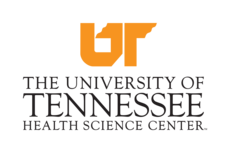Chapter of “Evolutionary Genomics” on workflow tools and Guix
The book Evolutionary Genomics was published in July this year. Of particular interest to Guix-HPC is the chapter entitled “Scalable Workflows and Reproducible Data Analysis for Genomics”, by Francesco Strozzi et al.:
In this chapter we show how to describe and execute the same analysis using a number of workflow systems and how these follow different approaches to tackle execution and reproducibility issues. We show how any researcher can create a reusable and reproducible bioinformatics pipeline that can be deployed and run anywhere. We show how to create a scalable, reusable, and shareable workflow using four different workflow engines: the Common Workflow Language (CWL), Guix Workflow Language (GWL), Snakemake, and Nextflow. Each of which can be run in parallel.
We show how to bundle a number of tools used in evolutionary biology by using Debian, GNU Guix, and Bioconda software distributions, along with the use of container systems, such as Docker, GNU Guix, and Singularity. Together these distributions represent the overall majority of software packages relevant for biology, including PAML, Muscle, MAFFT, MrBayes, and BLAST. By bundling software in lightweight containers, they can be deployed on a desktop, in the cloud, and, increasingly, on compute clusters.
The section devoted to the GNU Guix Workflow Language (GWL) describes the novel approach that the GWL has been exploring:
The Guix Workflow Language (GWL) extends the functional package manager GNU Guix with workflow management capabilities. GNU Guix provides an embedded domain-specific language (EDSL) for packages and package composition. GWL extends this EDSL with processes and process composition.
[…]
The tight coupling of GWL and GNU Guix ascertains that not only the workflow is described rigorously but also the deployment of the programs on which the workflow depends.
Tight integration of reproducible software deployment with higher-level tools, such as workflow tools, has been the topic of a FOSDEM 2018 talk we gave, entitled Tying software deployment to scientific workflows. While we’re still in the early days of implementing it, we believe that this approach is promising and may well be key to future reproducible science tool chains.

A lot of work has gone into the GWL since that chapter was written. Among other things, the maintainers, Roel Janssen and Ricardo Wurmus, have added support for a Python-like syntax (using Wisp) that should look familiar to many bioinformaticians. Check it out!
Unless otherwise stated, blog posts on this site are copyrighted by their respective authors and published under the terms of the CC-BY-SA 4.0 license and those of the GNU Free Documentation License (version 1.3 or later, with no Invariant Sections, no Front-Cover Texts, and no Back-Cover Texts).





